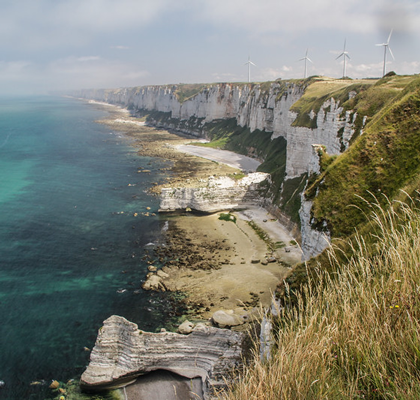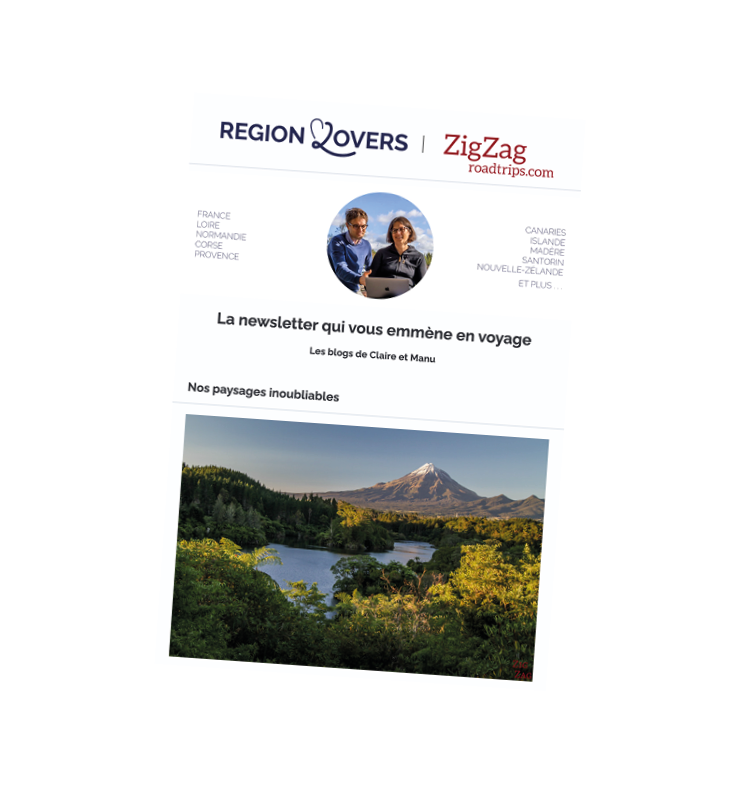Discover one of the most famous villages of Normandy: Veules-les-Roses and its river circuit.
There are many things to see while walking along the shortest river of France: old houses, cliffs, mills, history, beach…
Here is our guide to help you plan your visit with tips, maps and photos: what to do in Veules-les-Roses.
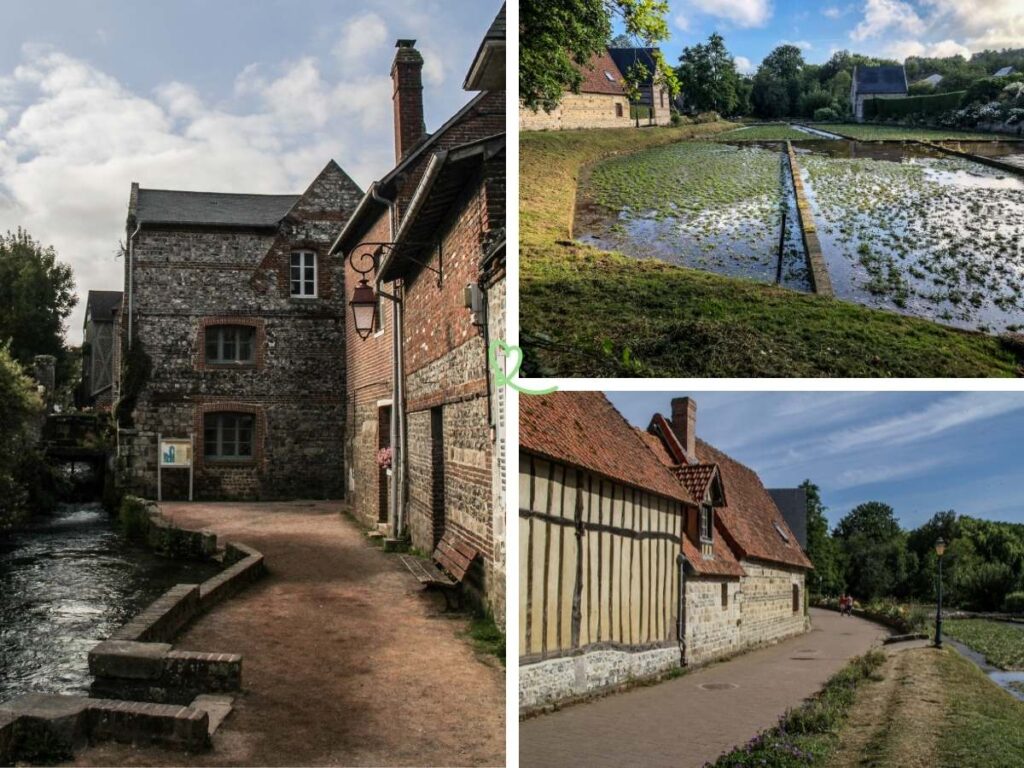
Why visit the village of Veules-les-Roses?
The smallest river in France
Veules-les-Roses is one of the most famous villages in Normandy.
It is known to shelter the smallest river of France which flows into the sea. It is only 1149 m long.
A walk will take you from the source to its mouth in the sea.
Along the way, you will see explanations about the use of the river with the watercress fields and the mills.
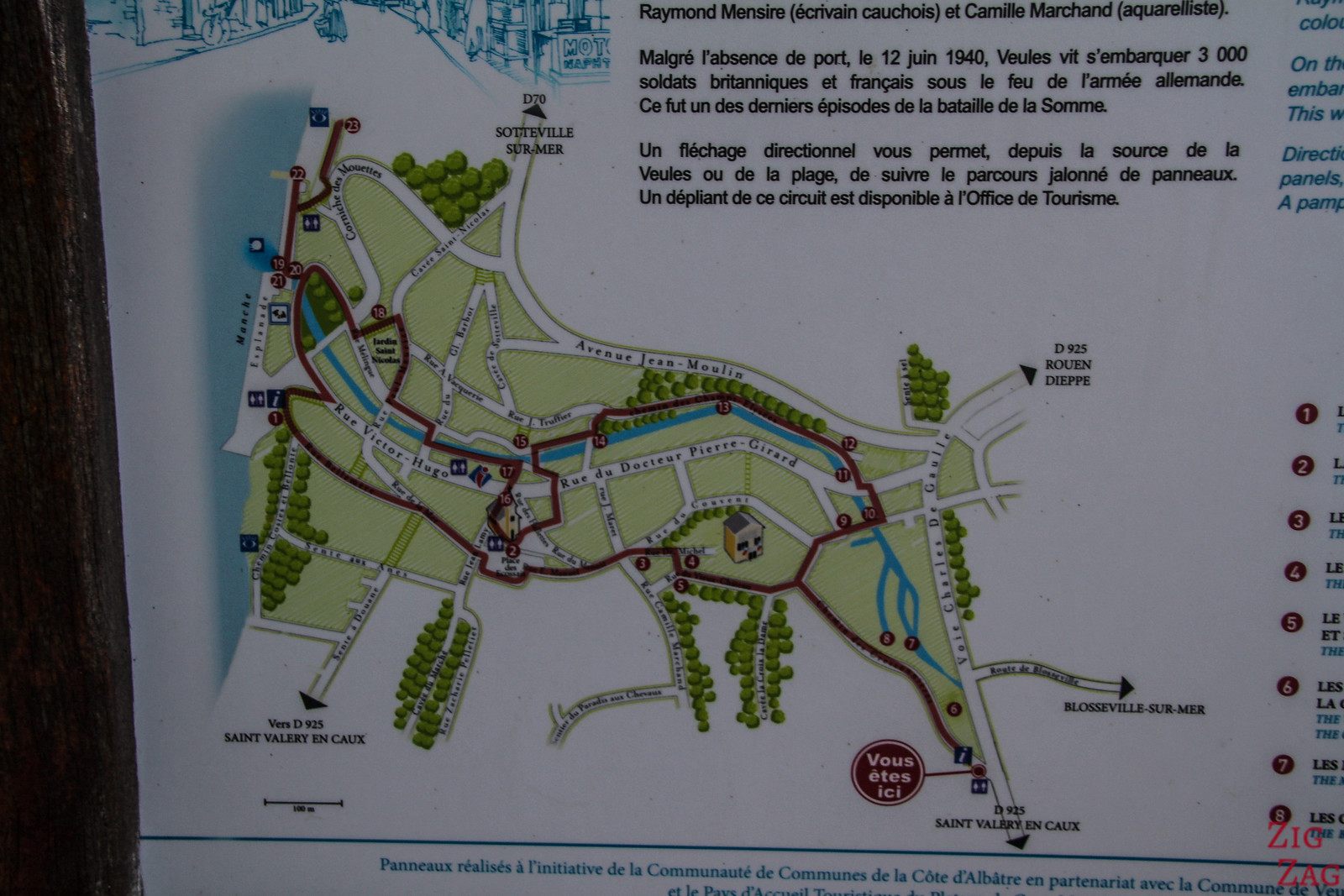
A charming village
But it is not only the river that is fascinating, it is also the charm of the village that operates. Inside the village you can see different houses typical of the area but from different periods. There are some well-preserved half-timbered houses with thatched roofs.
The whole loop is very pleasant.
Veules-les-Roses received the label “The most beautiful villages of France”. It is one of the best places to visit in Normandy.

Why the name Veules-les-Roses?
Veules is the name of the river. The name “Veules” can be derived from the Celtic word “Vaele” or from the old English word “well”. They both mean “place of watering”. So, no crazy name here, just something descriptive.
The words “the Roses” were added in 1897.
Best things to do in Veules-les-Roses
Our Top 5
We will detail later our visit of the village and the places to see, with photos, but here are our top 5, to give you an idea already:
- See the source of the shortest river in France
- Observe the watercress fields
- Walk the path along the river with thatched cottages and mills
- Enjoy the traditional brick houses in the heart of the village
- Climb the cliffs for great views
Video
Below is a short video to give you an idea of what the walk along the river and down to the beach looks like:
Brief history of Veules-les-Roses
It is one of the oldest villages in the region. In the Middle Ages, it was a flourishing fishing port.
However, through the ages, it has had to survive epidemics, fires, tidal floods and more… so, after centuries, it was just a village with a few weavers and farmers.
At the end of the 19th century, sea bathing became very fashionable. Many towns and villages on the Normandy coast have become popular. Veules-les-Roses was one of those places.
Many artists came here to enjoy its charm and be inspired. The most famous is the writer Victor Hugo.
During the Second World War, although it had no port, the village was one of the last episodes of the Battle of the Somme.
Practical advice – Veules-les-Roses, Normandy
How to get to Veules-les-Roses
- Located in Seine Maritime, along the Alabaster Coast.
- Between Saint-Valery-en-Caux and Dieppe
- Dieppe to Veules-les-Roses = 30min drive
- Le Havre to Veules-les-Roses = 1h15 drive
- Rouen to Veules-les-Roses = 1h drive
- It is not easy to reach by public transport.
- Here is a map to help you find your way:
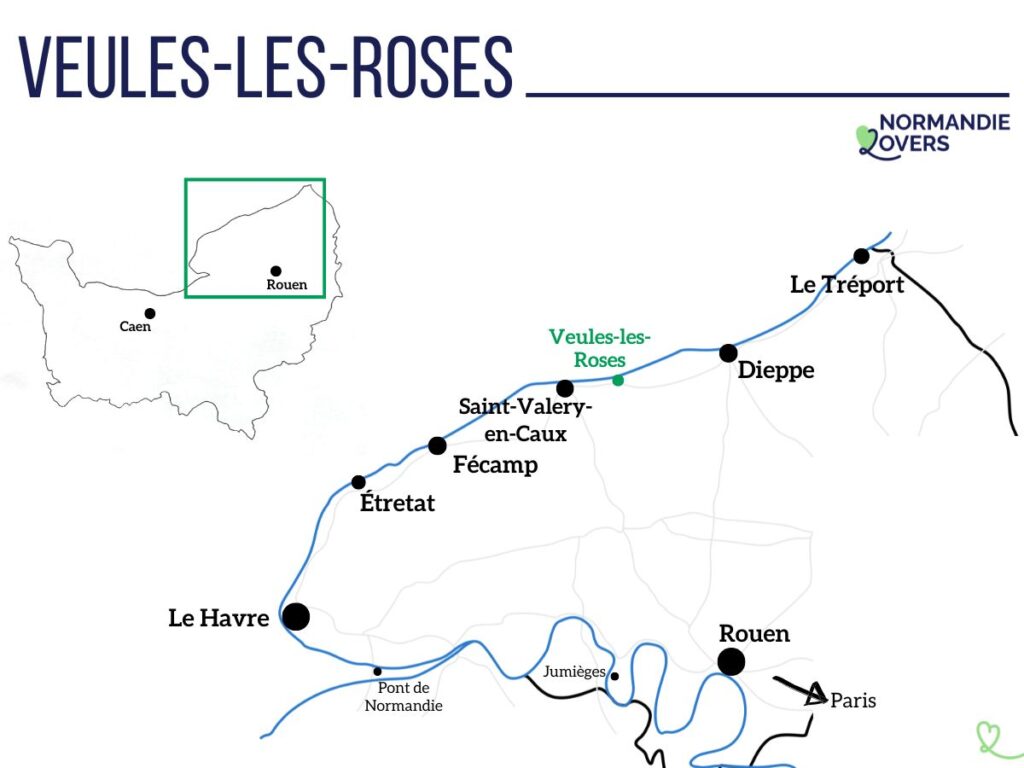
OUR ADVICE FOR RENTING A CAR IN Normandy
- Compare prices on our preferred platform: DiscoverCars – one of the best rated sites.
- Choose a car that is comfortable enough (distances can be long) but compact (some parking lots and villages are narrow).
- Think of thecomplete insurance (some roads are tortuous and narrow).
- There is a lot of demand, book it early.
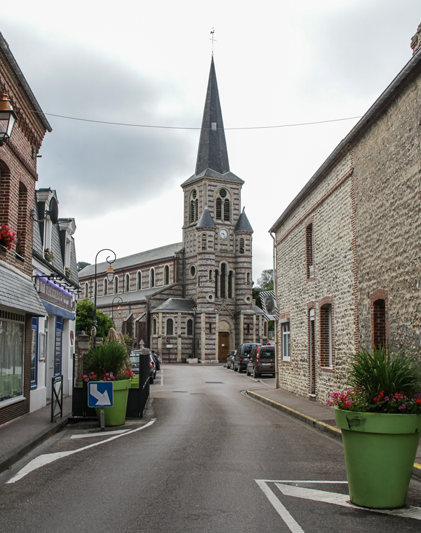
Tips for the visit
- You will find large parking lots at the entrance of the village. This is where the walking loop begins. They are quite large, but I still recommend coming early during the summer months, as it is quite touristy.
- The toilets are in the parking lots
- There is a map of the walk at the beginning. And at most stops along the way, you can see explanations of the houses, history, river, structures and more.
- Allow half a day to explore the village
- The walk is fairly easy, flat and well maintained. You can add 2 detours that require a climb on the cliffs on each side (slopes and stairs), but not too difficult
- Restaurants in the center and by the beach – mainly fresh fish and oysters

It is an ideal place to spend a night during your trip in Normandy. It has a lot of charm, and you can enjoy the walk early or late when the crowds are gone.
Find the best rated accommodations in the area
River circuit – Source of the Veules, watercress fields, mills…
Source of the Veules River
At the beginning of the walk, you can see the source of the river.
It doesn’t sound like much, but given the proximity to the sea, it’s pretty amazing.

Watercress fields
Then, you will discover the watercress fields. This is one of my favorite views along the way.
They are right next to the parking lots.
I love the way the water reflects the light.
They most probably started in the 14th century, taking advantage of the clear water of the river. It was the only salad during the winter and it was very sought after.
They are still produced today (not as much as before, but still a little). This type of production requires 8 to 10 cm of water and sunlight.
The seeds are planted in July. The plants grow until March. It is often rolled to have more contact with the ground.
Harvesting can begin after 6 to 8 weeks. The plants are cut with a knife. No machines.
But only 2/3 of the field is harvested as the rest is used to boost production.

Typical old houses
Along the way, you will see many charming old houses.
Some of them were those of the mill owners.
These are typical Norman houses with half-timbering and thatched roof.
Moreover, thanks to the river, the whole area is very green. Many views are fascinating.



Mills on the river
Several mills were built along the river.
Some are very visible, others are not.
The first mention of mills in the village dates back to the 13th century.
After the end of the feudal system, 5 new mills were built in the 18th century.
The last one was built in 1833, near the source of the river. As you can imagine, it lowered the river level below the mill and created some tension in the village.


The two mills that you can see best are a little further down the road, as you move away from the houses.
They were originally used to grind grains and seeds. But later, Anquetil’s was used to operate machines like a forge hammer and produce energy for saws, pumps…
The mill in Anquetil above did not stop working until 1940.
The mill “Des Aieux” (of the ancestors) below was built in the 18th century and stopped working in 1952. Its wheel has been renovated and can still turn. It is the last one to still have its 3 levels inside (explanations available on one of the boards).

Stone houses
The path then takes you to a more modern part of the village with stone houses. I also like this part because the houses, with a mixture of flint and brick, are also typical of the area.

USE OUR GUIDE TO PLAN A
DREAM TRIP TO Normandy
All the information you need for your trip:
- 8 maps that make planning easier
- 160+ pre-selected locations
- Practical advice
- 300+ photos to help you choose
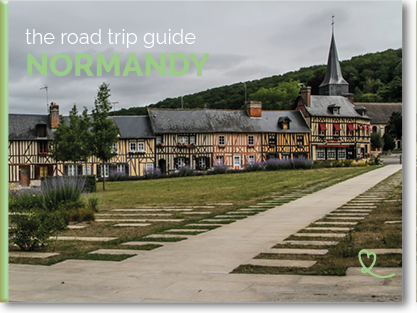
Center and church of the village of Veules-les-Roses
Village center
Before reaching the beach, you cross the center of the village.
They are mostly stone houses, but they have a lot of charm.


The church of Saint-Martin de Veules-les-Roses
Take time to admire the central church of Saint Martin.
Its square tower architecture is typical of the late 12th century, early 13th century.
However, the 3 naves, the choir and the chapels date from the 16th century. They were built in sandstone.


Inside, notice the sculptures on the columns. They have a nautical theme: boats, fish, mermaids…
And the organ dates from 1628.

Subscribe to our Newsletter
- Get away from it all with Region Lovers’ beautiful destinations!
- Once a month
- Advertising-free
Beach of Veules-les-Roses
And then you see the sea.
You can walk all along the water. This is where the river flows into the sea.

It is not one of the best beaches in Normandy (in our opinion), but you can still enjoy the typical cliffs of the Côte d’Albâtre.
From the pontoon, look to the left (south side) and you will see the line of cliffs to Saint-Valery-en-Caux.


Then, on the right (North), you can see beach huts against the cliffs. If you walk along them, you will notice a hole in the cliff.
It is the Victor Hugo cave. Apparently, he liked to contemplate the sea from here, when he stayed in the nearby house of his friend Paul Meurice.

PLAN YOUR TRIP TO Normandy
Inspiration destinations
- Deciding where to go in Normandy – the best destinations
- Our weekend ideas: best-of, romantic, unusual, seaside, luxury, family
- 16 seaside hotels in Normandy
- The most beautiful charming hotels in Normandy

Best of

Practice
- Where to stay in Normandy – best places and hotels
- See our tips for renting a car at CDG airport, Orly airport, Beauvais airport, Caen, Rouen, Bayeux…

Detour 1- Cerons Memorial
From the beach, you can simply complete the loop and return to the parking lots (see the return section).
Or you can decide to climb the cliffs of the North. It is a mixture of steep slopes and stairs.

You will reach an open area with beautiful views of the village and the beach.
But it is also where the Cerons memorial is located. You can learn more about the battle of Veules from June 6 to 12, 1940.


Detour 2 – Panorama on the cliffs
As you begin your journey home. You can stay on the streets or head for the trees to find an observation platform and a bunker.
If you’re tired, I don’t think it’s worth it compared to the other amazing views you can get at Etretat or Cap Fagnet near Fécamp.


Way back
And then you start heading back to the parking lots.
The path moves away from the river.
There is less to see. Mainly 2 main sights.

Convent of the penitents
Founded in 1617.
But after the French revolution, in 1791, it was sold as national property. It then became a private property and, unfortunately, the cloister was later destroyed.
All you can see today is the chapel, which was built in 1662. It is now an exhibition hall.

Castle and dovecote
And then you pass by the old castle. Only the exterior walls remain.
However, through the entrance gate of the current private domain, you can see the old dovecote. It dates from the 18th century. It is round and attached to a well.

As you continue walking, you come back to the watercress fields, the spring and the parking lots.
Do not make
THE SAME MISTAKE WE MADE
On one of our last trips to Europe, a hacker stole our credit card details while we were using a hotel WiFi.
So our trip began with a “card blocked” call… Not funny at all!
Learn from our mistake, make a small VPN investment to surf without worry.



